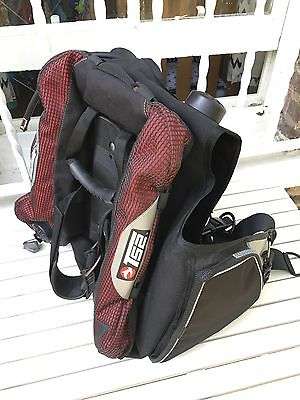Pinecube
Contributor
But, with my current setup, if I empty my BC at the safety stop, I sink. Conventional wisdom says that means I'm over weighted. However! When I start my dive I always have to work a little to get down the first few meters. I flap like an injured seagull on the surface when I'm trying to descend. Once I'm down to about 3m, I then sink just fine.
The one thing that I was taught was that people will exhale and deflate their BCD at the same time. The problem is that it takes a bit for the BCD to deflate and by the time the diver starts to sink, they are already inhaling. The trick (if you can call it that) is to inhale as you deflate your BCD. As it becomes empty, slowly exhale. One other thing is to also be mindful of your feet. Even small movements of your knee or ankle can move your fins enough to slow or stop your descent.
I'll echo what others have said too, if you need another 0.5-1kg it's really not a big deal.





